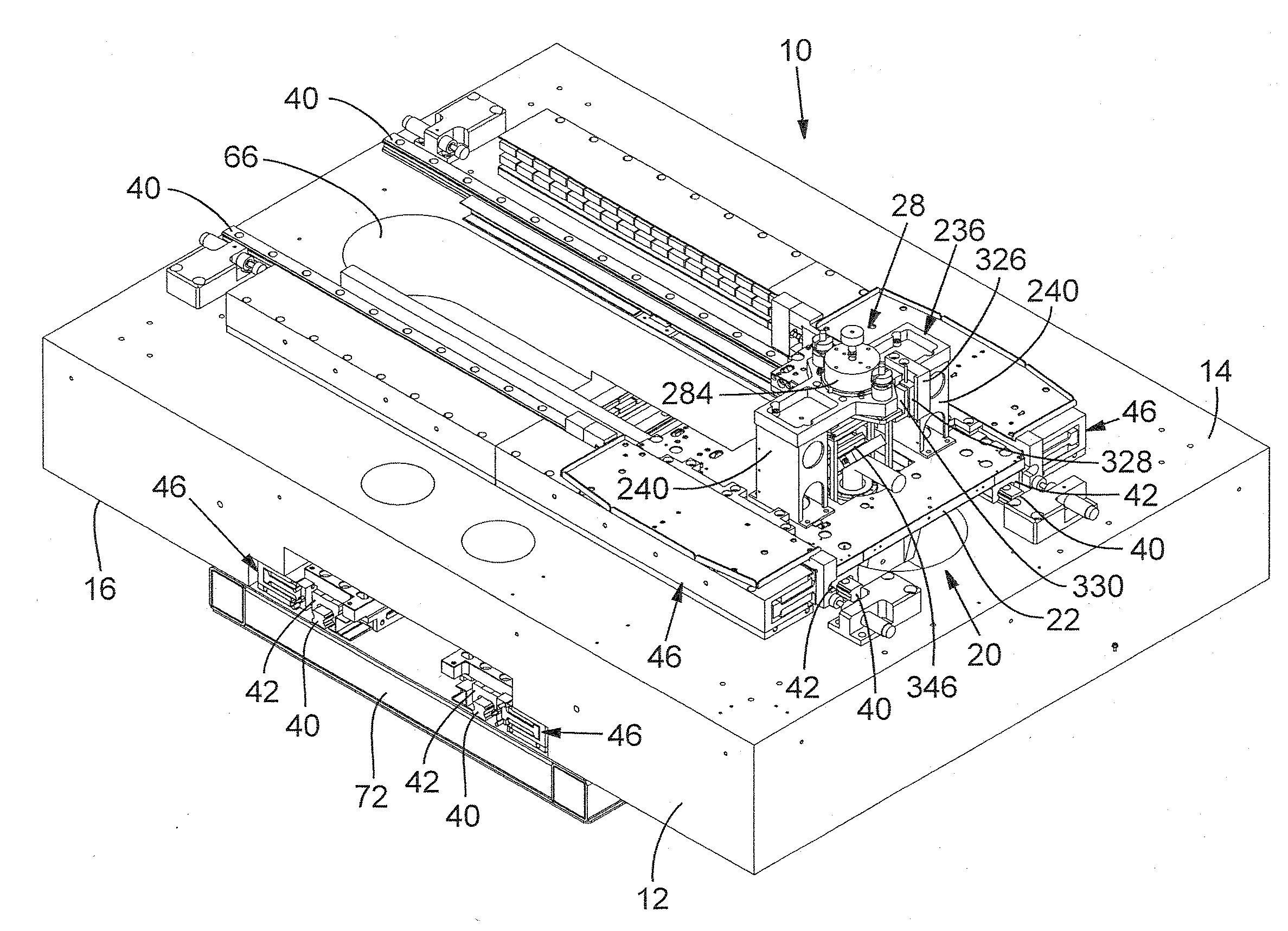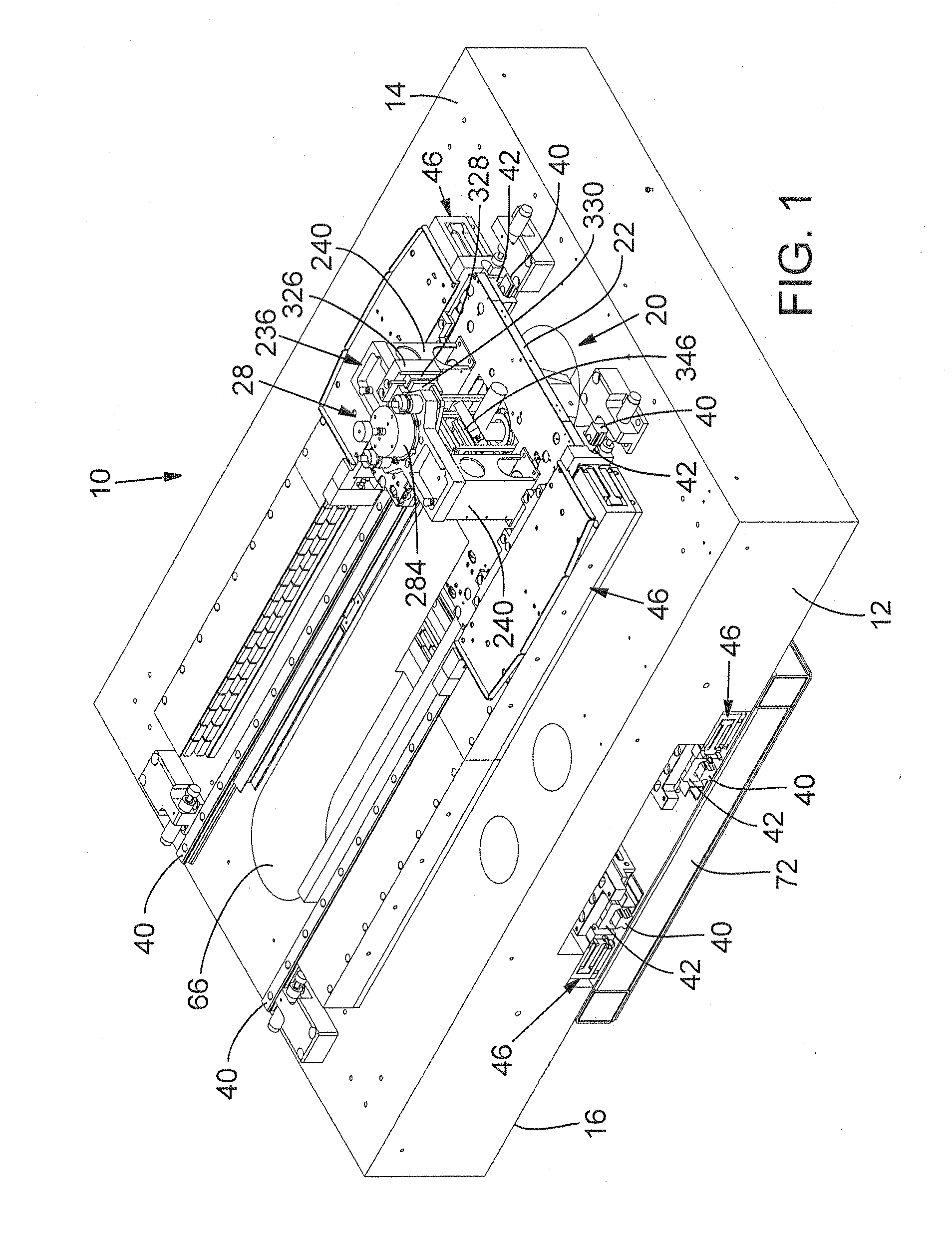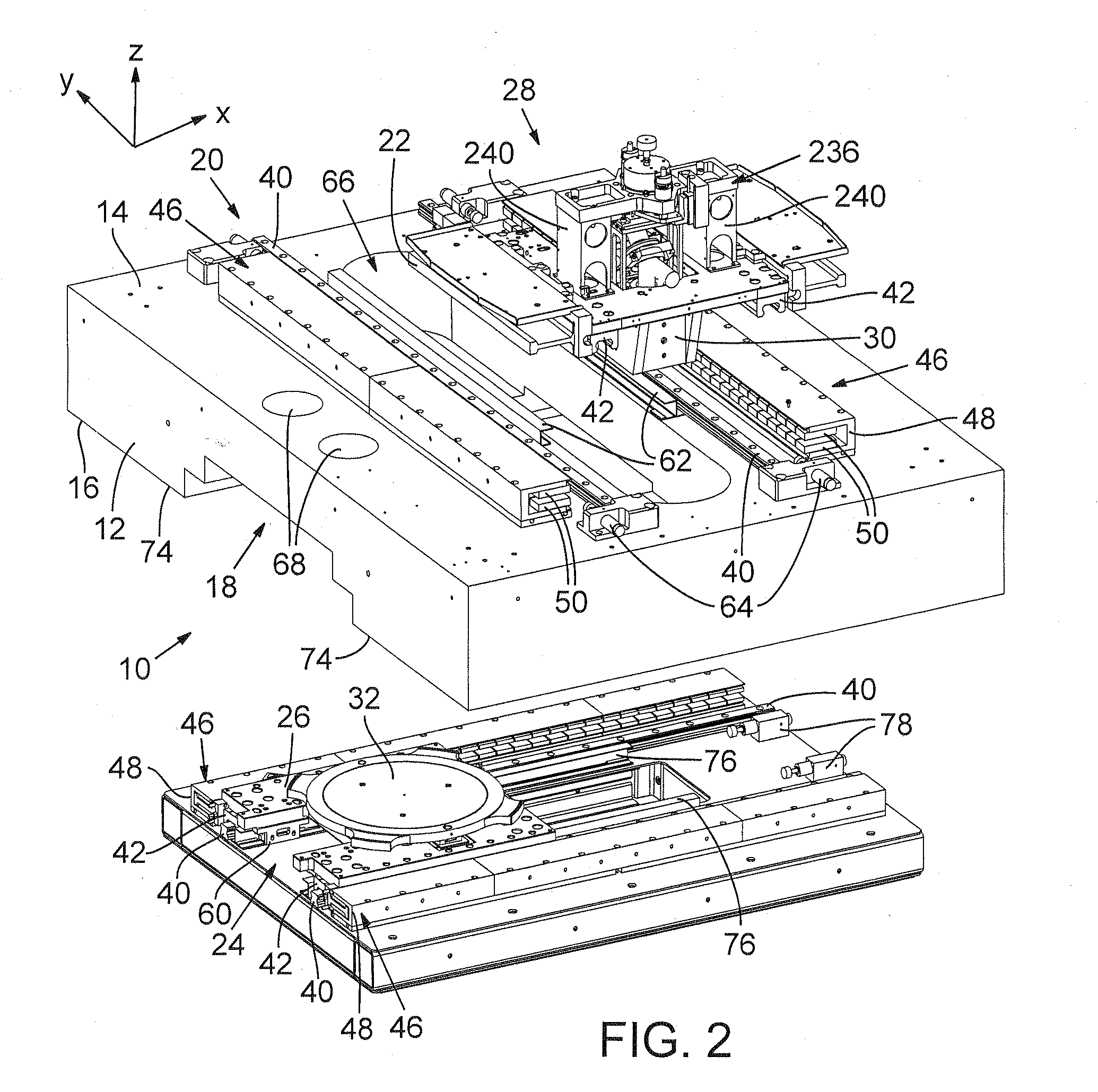Decoupled, multiple stage positioning system
a positioning system and multiple stage technology, applied in the field ofspecimen processing systems, can solve the problems of particle contamination becoming of greater concern, state-of-the-art structures supporting the laser assembly are too flexible to maintain the required level of precision, etc., and achieve the effects of less motion error, less noise, and less nois
- Summary
- Abstract
- Description
- Claims
- Application Information
AI Technical Summary
Benefits of technology
Problems solved by technology
Method used
Image
Examples
Embodiment Construction
[0018]FIGS. 1 and 2 show a decoupled, multiple stage positioning system 10, which, in a preferred embodiment, supports components of a laser processing system through which a laser beam propagates for incidence on a target specimen. Positioning system 10 includes a dimensionally stable substrate 12 made of a stone slab, preferably formed of granite, or a slab of ceramic material, cast iron, or polymer composite material such as Anocast™. Substrate 12 has a first or upper flat major surface 14 and a second or lower flat major surface 16 that has a stepped recess 18. Major surfaces 14 and 16 include surface portions that are plane parallel to each other and conditioned to exhibit flatness and parallelism within about a ten micron tolerance.
[0019]A surface portion of upper major surface 14 and a first guide track assembly 20 are coupled to guide movement of a laser optics assembly stage 22 along a first axis, and a surface portion of lower major surface 16 and a second guide track asse...
PUM
| Property | Measurement | Unit |
|---|---|---|
| flatness | aaaaa | aaaaa |
| thickness | aaaaa | aaaaa |
| motive force | aaaaa | aaaaa |
Abstract
Description
Claims
Application Information
 Login to View More
Login to View More - R&D
- Intellectual Property
- Life Sciences
- Materials
- Tech Scout
- Unparalleled Data Quality
- Higher Quality Content
- 60% Fewer Hallucinations
Browse by: Latest US Patents, China's latest patents, Technical Efficacy Thesaurus, Application Domain, Technology Topic, Popular Technical Reports.
© 2025 PatSnap. All rights reserved.Legal|Privacy policy|Modern Slavery Act Transparency Statement|Sitemap|About US| Contact US: help@patsnap.com



